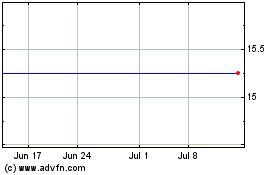Calpine Applauds the EPA’s Approach to Regulating Green House Gas Emissions under the Clean Air Act
November 15 2010 - 4:47PM
Business Wire
On November 10, 2010, the U.S. Environmental Protection Agency
(EPA) issued guidance to assist permit writers and the power
industry in complying with the prevention of significant
deterioration (PSD) and Title V permitting requirements of the
Clean Air Act for greenhouse gas (GHG) emissions. Beginning January
2, 2011, GHG emissions from large stationary sources will, for the
first time, be covered by the PSD and Title V permit programs.
“Calpine applauds the EPA’s efforts to develop a reasonable and
pragmatic approach to regulating GHG emissions under the Clean Air
Act,” said Jack A. Fusco, President and Chief Executive Officer of
Calpine (NYSE:CPN). The EPA’s actions to date are reasonable and
positive steps towards curbing GHG emissions from the electric
power sector by focusing on energy efficiency improvements while
retaining the existing permitting procedures of the Clean Air
Act.”
The EPA’s GHG permitting guidance outlines a process similar to
what has been required for other air pollutants regulated under the
Clean Air Act, including the five-step “top down” best available
control technology (BACT) analysis. Calpine is uniquely familiar
with this approach. Consistent with its long track record as a
leader in generating environmentally responsible renewable
geothermal and natural gas-fired electricity, Calpine received the
nation’s first federally enforceable air permit with limits on the
emissions of carbon dioxide (CO2) and other GHGs. The PSD permit
for Calpine’s Russell City Energy Center in Hayward, California,
includes limits that will result in 50 percent fewer GHG emissions
than even the most advanced coal-fired plants.
“Calpine’s Russell City project provides real-world proof that
this approach to controlling GHG emissions can work while
stimulating innovation, local development and jobs,” said Fusco.
“While we continue to review the details of the EPA’s guidance, it
appears that the EPA’s BACT guidance continues the measured
approach the agency began with its proposal to limit the
applicability of GHG permitting rules to the highest emitting
sources. As the EPA makes clear, however, the document provides
guidance, not iron-clad rules. As the EPA and the states move
toward implementation, we look for them to stay on the reasonable
course that the EPA has set.”
About Calpine
Founded in 1984, Calpine Corporation is a major U.S. power
company, currently capable of delivering nearly 29,000 megawatts of
clean, cost-effective, reliable and fuel-efficient power from its
93 operating plants to customers and communities in 21 U.S. states
and Canada. Calpine Corporation is committed to helping meet the
needs of an economy that demands more and cleaner sources of
electricity. Calpine owns, leases and operates low-carbon, natural
gas-fired and renewable geothermal power plants. Using advanced
technologies, Calpine generates power in a reliable and
environmentally responsible manner for the customers and
communities it serves. Please visit our website at www.calpine.com
for more information.
Forward-Looking Information
In addition to historical information, this release contains
forward-looking statements within the meaning of Section 27A of the
Securities Act of 1933, as amended, and Section 21E of the
Securities Exchange Act of 1934, as amended. Words such as
“believe,” “intend,” “expect,” “anticipate,” “plan,” “may,” “will”
and similar expressions identify forward-looking statements. Such
statements include, among others, those concerning expected
financial performance and strategic and operational plans, as well
as assumptions, expectations, predictions, intentions or beliefs
about future events. You are cautioned that any such
forward-looking statements are not guarantees of future performance
and that a number of risks and uncertainties could cause actual
results to differ materially from those anticipated in the
forward-looking statements. Please see the risks identified in this
release or in Calpine’s reports and registration statements filed
with the Securities and Exchange Commission, including, without
limitation, the risk factors identified in its Annual Report on
Form 10-K for the year ended Dec. 31, 2009, and its Quarterly
Report on Form 10-Q for the quarter ended Sept. 30, 2010. These
filings are available by visiting the Securities and Exchange
Commission’s website at www.sec.gov or Calpine’s website at
www.calpine.com. Actual results or developments may differ
materially from the expectations expressed or implied in the
forward-looking statements, and Calpine undertakes no obligation to
update any such statements.
Calpine (NYSE:CPN)
Historical Stock Chart
From May 2024 to Jun 2024

Calpine (NYSE:CPN)
Historical Stock Chart
From Jun 2023 to Jun 2024
